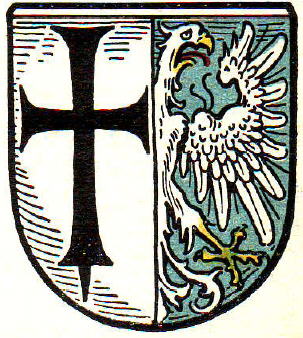Hüsten: Difference between revisions
Jump to navigation
Jump to search
Knorrepoes (talk | contribs) No edit summary |
Knorrepoes (talk | contribs) m (Text replace - "[[Literature" to "{{media}} [[Literature") |
||
| Line 18: | Line 18: | ||
The arms combine the cross of the [[Köln (State)|State of Köln]] and the eagle of the Counts of Arnsberg. The oldest seal of the town dates from the 15<sup>th</sup> century and shows St. Peter, the patron saint of Köln, behind a divided shield. The shield shows an eagle in one half and no recognizable image in the other half. | The arms combine the cross of the [[Köln (State)|State of Köln]] and the eagle of the Counts of Arnsberg. The oldest seal of the town dates from the 15<sup>th</sup> century and shows St. Peter, the patron saint of Köln, behind a divided shield. The shield shows an eagle in one half and no recognizable image in the other half. | ||
{{media}} | |||
[[Literature]] : Hupp, O: [[Kaffee Hag albums]], 1920s | [[Literature]] : Hupp, O: [[Kaffee Hag albums]], 1920s | ||
Revision as of 23:14, 8 July 2014
| Heraldry of the World Civic heraldry of Germany - Deutsche Wappen (Gemeindewappen/Kreiswappen) |
HÜSTEN
State : Nordrhein-Westfalen
District (Kreis) : Arnsberg
Incorporated into : 1941 Neheim-Hüsten (1975 Arnsberg)
Origin/meaning
The arms were adopted in 1911.
The arms combine the cross of the State of Köln and the eagle of the Counts of Arnsberg. The oldest seal of the town dates from the 15th century and shows St. Peter, the patron saint of Köln, behind a divided shield. The shield shows an eagle in one half and no recognizable image in the other half.
Contact and Support
Partners:
Your logo here ?
Contact us
© since 1995, Heraldry of the World, Ralf Hartemink 
Index of the site
Literature : Hupp, O: Kaffee Hag albums, 1920s











